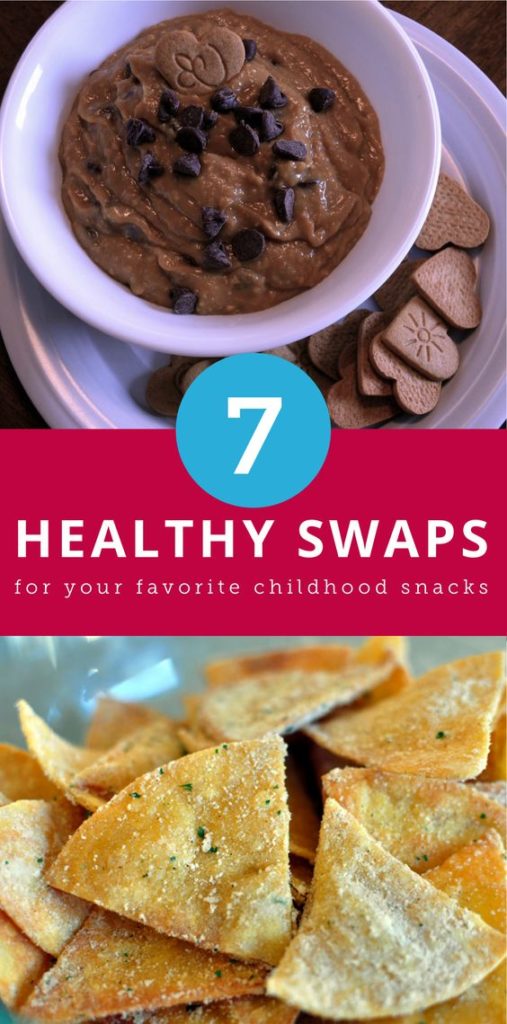40 the truth behind calorie labels
Low Sodium Lunch Meat: Brands and Tips - Verywell Fit Sep 17, 2020 · Clemson Cooperative Extension. Clemson University: South Carolina. HGIC 4061 Nutrient Claims on Food Labels. U. S. Food and Drug Administration. Guidance for Industry: A Food Labeling Guide (9. Appendix A: Definitions of Nutrient Content Claims. U.S. Food and Drug Administration. Consumer Information on Reducing Sodium Intake. USDA. SNAP-Ed ... The Best Foods for Healthy Weight Loss – Diet Doctor 26.05.2022 · In a study conducted in an inpatient hospital ward, 20 people ate a non-calorie-restricted ultra-processed diet and non-calorie-restricted minimally processed diet for two weeks each, in random order. The participants ate an average of 500 calories more per day on the ultra-processed diet — entirely from carbohydrates and fats — and gained 2 pounds (0.9 kilos), on …
The Truth Behind Calorie Labels - YouTube An OpDoc for the New York Times. Original posting and statement here; Thank You to Dr. Rising, Ping and Dr. Pi-Sunyer as well a...

The truth behind calorie labels
The Truth About Food Labels - ABC News A University of Minnesota study showed that 91 percent of shoppers often bypass the calorie count before buying an item. That's bad: If each meal exceeds your energy needs by just 170 calories, you can gain a pound a week. Fat Plenty of men still assume that if a food is low in fat, it's good for them and vice versa. Far from it, says Dr. Katz. The Truth About Carbs And Calories : NPR Place all the ingredients in a wide-mouth Mason jar or cup that will fit an immersion blender without splashing. Blend, working the blender in the jar until the garlic, ginger and turmeric are ... Zero Calorie Foods: Myth Or Fact? - Be Zen A calorie is a measure of energy content in food or your body; usually expressed as kcal (kilocalories). Negative calorie foods contain very few calories. Supposedly, your body uses up more calories to eat and digest these foods than they contain and give to your body. This mechanism is referred to as a caloric deficit.
The truth behind calorie labels. Cracking The Code: The Truth Behind Food Labels "Low-calorie": 40 calories or less per serving. "High": The item contains at least 20% of the daily recommended value for that particular nutrient. "Multigrain": Made from more than one type of grain. And with that, knowledge is power. The post Cracking The Code: The Truth Behind Food Labels originally appeared on Spoon University. Beyond Weight Loss: Breaking the Fat Loss Code (2020) - IMDb Beyond Weight Loss: Breaking the Fat Loss Code: Directed by Thomas C. Odar. With Keith Klein, Larry North, Mike Ryan, Roxanne Edrington. A documentary that takes a hard look into the world of sustainable weight loss by exposing the fraud and deceit of the diet industry and our government. Find out the truth behind fad diets, food labels and permanent fat loss. The Truth Behind the Misleading Labels on Food Packaging Photo by Jaye Lind. This means the product has 50% less fat than its original product and/or the calories have been reduced by at least 33%. Be wary of the claim of "light" correlating to lighter color or flavor, though. Light olive oil and light brown sugar both indicate a less intense flavor and lighter colors respectively, not lighter in ... The truth behind 'sugar-free', 'unsweetened' and 'no added sugar' It simply means that the manufacturer didn't add any sugar during the process of manufacturing. A product with a 'No Added Sugar' label may still contain natural sugars, artificial sweeteners or sugar alcohols. Foods commonly carrying this claim are granola bars, spreads, fruit juices and preserves. 2.
Exam: 03.03 The Truth Behind the Label Flashcards | Quizlet According to FDA regulations, if a product contains 40 calories total or fewer per serving, it may be labeled A. low calorie B. reduced calorie C. no calories D. minimal calories A. low calorie According to FDA regulations, if a product claims to have "no added sugar," it means that it must contain A. fewer than 0.5g of total sugar in each serving " The truth behind calorie labels " Thoughts on this video? Page 1 of 2 - " The truth behind calorie labels " Thoughts on this video? - posted in Anorexia Discussions: I found this video while browsing youtube and lm having some mixed feelings and would like to hear what others think of it . Also it is to be expected that calorie counts from fast food joints would be innaccurate . calorie labels - HuffPost Michael McAuliff 2015 Means New FDA Calorie Labeling on Menus Readily available calorie information is crucial for consumers to be able to make informed food choices throughout the day as they get their food from a variety of venues. Our nation is facing rising rates of obesity and chronic disease that continue to push health care spending higher. Module 3 The Truth Behind the Label;Eat Like an Athlete Read labels carefully to watch for hidden sugars and unhealthy fats. According to FDA regulations, if a product claims to be "low calorie," it means that it must contain 40 calories or fewer per serving According to FDA regulations, if a product claims to be "low fat," it means that each serving must contain 3g or fewer of total fat
The Truth Behind So Called "Negative Calorie Foods" The Truth Behind So Called "Negative Calorie Foods" Emma Kumer Updated: Mar. 28, 2022. ... Try reading more nutrition labels, choosing smarter meals at restaurants, or ... The Best Foods for Healthy Weight Loss – Diet Doctor May 26, 2022 · Low-fat dairy foods provide more protein per calorie and are less energy dense than full-fat dairy products. So when it comes to maximizing satiety per calorie, low-fat dairy wins. For this reason, making low-fat choices works best for most weight loss diets. Just be sure to read labels and avoid low-fat yogurt with added sugar and starch. The Truth About Low Carb Diets - WebMD Carbohydrates and protein each contain about 4 calories per gram, and fats have 9 calories per gram. That means a blue cheese-topped steak, one of the offerings on T.G.I. Friday's Atkins-Approved... 200 Best Ways To Lose Weight — Eat This Not That 07.06.2021 · Shutterstock. Making your sandwich with two slices of bread is so last year. Aid your slim down efforts by opting for whole-grain bread over white and preparing your sandwich "open-faced" style—the fancy name for kicking the top piece of bread to the curb. Doing so keeps about 70 to 120 calories off your plate.
200 Best Ways To Lose Weight — Eat This Not That Jun 07, 2021 · Though both groups gained the same amount of weight over a two-month period, the fructose group gained its weight primarily as belly fat because of the way this type of sugar is processed in the liver. To avoid the belly-bloating HFCS trap, make sure you look at nutrition labels carefully and ditch the processed snacks and fruit drinks.
The Truth Behind Food Labels and Food Health Claims In "trans-fat-free" products, manufacturers can label their goods as having no trans fat as long as it contains less than 0.5g per 100g. If you spot partially hydrogenated oil or shortening in the ingredients list, it is nearly always an indication of the presence of trans fat, which is harmful to your heart.
The truth behind CBD labels - New Food Magazine Of the 208 products purchased, over 75 percent were off by at least 10 percent of the CBD value listed on the label. In other words, of the products that claimed to have 100mg of CBD on the package, 75 percent of them had either less than 90mg or more than 110mg.
The Truth Behind Calorie Listings - Business Insider The actual calorie content was almost double what the label claimed: a shocking 548.4 calories. That about equates it to a McDonald's Big Mac. Casey Neistat/YouTube And finally, he put Subway to...
Resource Materials - Diabetes Education Online 1200 calorie sample meal plan using exchange lists for diabetes; 1600 calorie sample meal plan using exchange lists for diabetes; Nutrition Facts; Understanding Carbohydrates. Carbohydrates; Calculating Carbohydrate By Food Weight; 3-Day Food Record; Counting Carbohydrates; 1-day sample 45g CHO per meal menu plan using carb exchange lists
The sneaky truth behind nutrition bars - A Healthier Michigan Let's break down the main nutritional misconceptions behind nutrition bars, including sugar, protein, fats, and nutrition label ingredients. Sugar Most nutrition bars have just as much sugar as eating a cookie. In fact, high fructose corn syrup is a main ingredient in most cases.
NutriFACTS or NutriFAKES?: The Truth behind Food Labels Finally, when labels say 'FAT FREE', it does not necessarily mean absolutely zero fat. Products that claim to be fat free are those with most likely 0.05 and below gram of fat per serving. Since, the figure is 0.05 and below, manufacturers round them off to zero and therefore it becomes fat-free.
8 Ways Product Labels Hide the Truth From Us / Bright Side When we go to the grocery store after a long working day, the last thing we want is to try to read the ingredient information written in the tiniest font. Researchers say that only 15% of people actually pay enough attention to the nutrition info on the products they buy. This allows some manufacturers to use misleading marketing strategies to make us buy their products.
The Truth About NET Carbohydrates | DrJohnRusin.com First, while IMO is technically a low glycemic carbohydrate, it's hardly considered the lowest of the low. The glycemic index ranks foods based off of their affect on blood glucose levels. Studies have shown that IMO is a 34.66+/-7.65 on the glycemic index (1). This would be equivalent to barley or grapefruit (26 GI) or apple juice (41 GI).







Post a Comment for "40 the truth behind calorie labels"